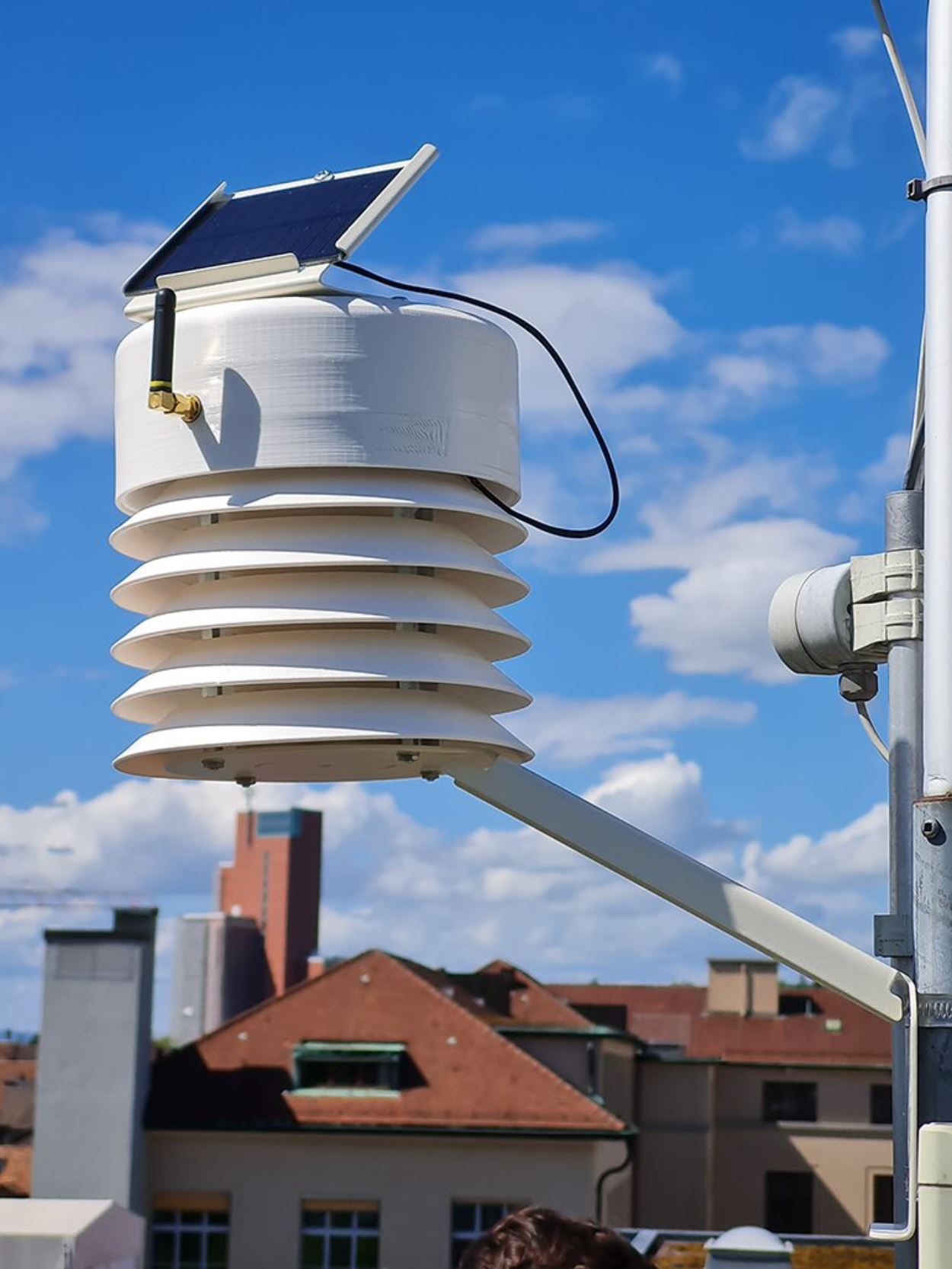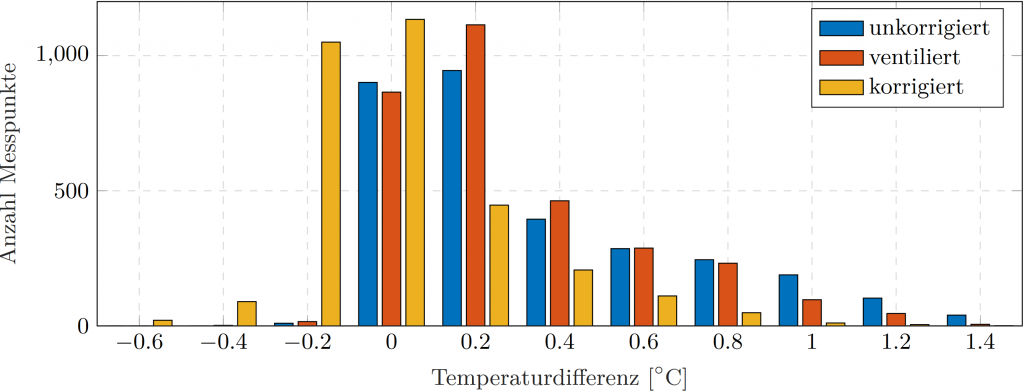Navigation menu
- Education
- Emissions & Air Quality
- Infrastructure & Services
- Meteorology & Climate
- News
- Physical Chemistry
- Projects
- The Team
Guest post by our two former Bachelor students Simon Moser and Lucas Spring
To better understand the urban heat island effect (UHIE) and to be able to plan urban heat mitigation measures in a more targeted way, high-resolution models of the temperature distribution in cities are needed. An important component to develop and validate such models are in-situ measurements with a network of temperature stations as dense as possible. The construction of such a network often fails due to the high costs of ownership since precise measuring stations are expensive. This problem was tackled by two students in their bachelor thesis, in which they took up the challenge of developing a measuring station for RH and T from scratch (Fig. 1). The biggest difficulty from a measurement point of view was to keep the radiation error small, for which they developed a new measurement method.

Existing measuring stations on the market are mostly permanently ventilated and expensive or have a high radiation error. Since the newly developed station had to be inexpensive and sturdy, it was necessary to design an independent power source, because it would be too expensive to connect each station to the power grid. As well, because the station is designed to capture the UHIE, a high absolute accuracy was required.
The developed measurement method, which is supposed to be energy-saving and precise at the same time, is based on the system theory of linear time-invariant (LTI) systems. A small fan was installed to ventilate the temperature sensor. However, the fan is not operated permanently, but only intermittently over short times. Switching on the fan causes step response of the system. Experiments in the laboratory showed that this system response is linear to the radiation error (second order system). This means that one can predict the behavior of the measuring station by observing the system response. This way the correct temperature reading can be extrapolated a long time before the fan has had a chance to equilibrate the system entirely. This results in a greatly reduced runtime of the fan (30 s per measurement) and thus a highly efficient use of energy.
In another experiment, two prototypes of the developed measurement station were operated in parallel with a reference measurement station (ventilated Lufft WS800 UMB) to determine the extrapolation parameters. By means of an equalization calculation, these parameters were determined and applied to the same measurement data. This led to a significant reduction of the radiation error and to a high absolute accuracy (Fig. 2).

Nevertheless, the extrapolation of further measured values with the same extrapolation parameters resulted in values that, in some cases, deviated strongly from the reference values . The students speculate that the influence of the wind on the open radiation shield causes a nonlinear behavior of the system. To better investigate this effect and to improve the developed measurement method, a further prototype is to be built in upcoming research work, which should behave as linearly as possible even in variable wind situations.
The complete bachelor thesis can be found here.